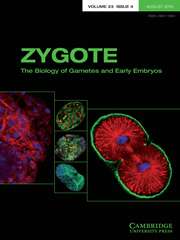No CrossRef data available.
Article contents
Preparation of time-lapse culture dishes with refrigerated medium, rather than pre-warmed, may result in better clinical outcomes
Published online by Cambridge University Press: 07 July 2025
Summary
This study aimed to compare the clinical outcomes of using refrigerated versus pre-warmed media for preparing time-lapse dishes in in vitro fertilization (IVF). Patients undergoing their first IVF/ICSI cycle were divided into two groups. The control group used pre-warmed culture media, while the experimental group used refrigerated culture media. The osmotic pressure of the culture droplets in both groups was tested. No statistical differences were found between the two groups’ basic data. The proportion of air microbubbles affecting imaging significantly decreased (4.55% vs. 37.97%, P < 0.001) when using pre-warmed media. However, the blastocyst formation rate (56.62% vs. 49.70%, P = 0.046) and total high-quality embryo rate (22.26% vs. 17.06%, P = 0.047) were significantly higher in the refrigerated media group compared to the pre-warmed media group. The higher rate of high-quality embryos in the refrigerated media group might result in a higher single embryo transfer rate (45.10% vs. 18.52%, P = 0.020) and implantation rate (58.23% vs. 34.69%, P = 0.010). From day –1 to day 1, osmolality increased, with the P-3.5 group showing a significant elevation compared to the other three groups. After 5 days of incubation, the osmotic pressure of group R-4.0 was significantly lower than that of groups P-3.5, P-4.0 and P-3.5. In conclusion, refrigerated culture media dishes helped stabilize the osmotic pressure of the culture microenvironment and reduce water evaporation. The refrigerated group showed a higher rate of high-quality embryos and live births, although pre-warmed culture media effectively reduced the occurrence of air microbubbles that affect embryo imaging in the next day’s dishes.
Keywords
Information
- Type
- Research Article
- Information
- Copyright
- © The Author(s), 2025. Published by Cambridge University Press


